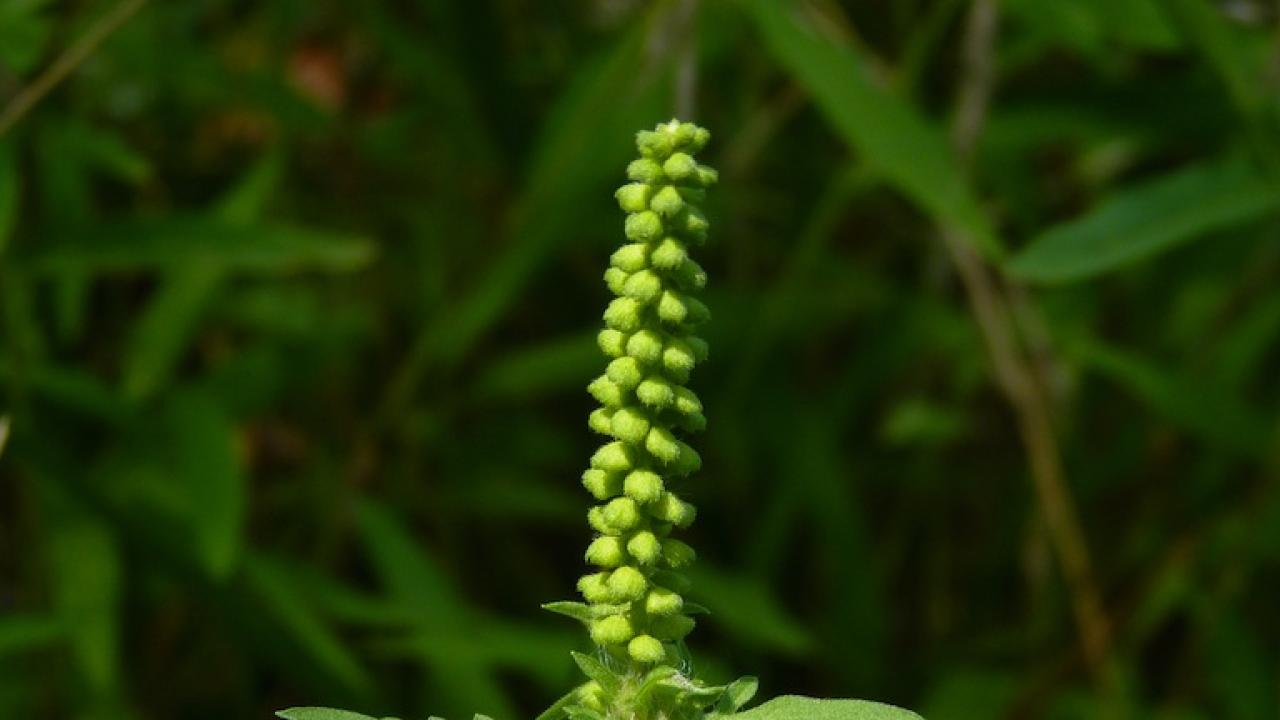
There might be more than just a nip in the air in autumn. Autumn is also the season for the spread of Ambrosia pollens, notorious for causing allergic rhinitis (or hay fever). Commonly referred to as ragweed, Ambrosia artemisiifolia is plant native to North America but it is highly invasive and is now colonizing parts of central Europe, causing a spike in allergic diseases and driving up medical costs. But is this pollen invasion related to the changing climate, land use practices and other human activities? A collaborative European project, Atopica, was set up to find answers.
As one of the partners in this pan-European effort, ICTP has been focussing on the climate physics and modelling aspects of the project. Fabien Solmon, Li Liu, Csaba Torma and Filippo Giorgi, researchers at ICTP's Earth System Physics (ESP) section, use land-surface and climate models to simulate the seasonal production of Ambrosia pollen, its release and atmospheric transport. "We chose to focus on Ambrosia because it is very invasive and extremely allergenic. And, because it is foreign to Europe many people are developing new allergies," says Solmon.
Another facet that ICTP researchers are looking at is to see how climate and land use changes are affecting Ambrosia invasion, pollen concentrations and allergy increases. "The changing climate in Europe is making it suitable for Ambrosia to colonize and grow, and up to a certain point makes stronger plants when climates are warmer," says Solmon. He points out that countries in central Europe like Hungary already had severe pollen-related allergy problems, and it is now spreading to parts of Slovenia, Croatia, northern Italy, France and Germany. “Western and northern Europe, where pollen levels are presently low, has also more potential for Ambrosia colonization in a warming climate. And more people may develop allergies because there was no Ambrosia in these parts before," he says.
Because multiple factors, including warming temperatures, land use polices, and air quality, interact together to increase the spread, pollen concentrations and subsequent allergy rates of Ambrosia, scientists from different disciplines (ecology, epidemiology, medicine, atmospheric chemistry and climate research) have come together for the project. "The final goal is to better define strategies to mitigate pollen spread and allergy rates," says Solmon.
The results of the Atopica project will be presented at a conference in Brussels, Belgium, from 5 to 6 March 2015. Head of ESP Filippo Giorgi will be one of the speakers at the conference. More details about the conference are available on the Atopica Conference Website. In-depth information about Atopica project is available on the project website.













